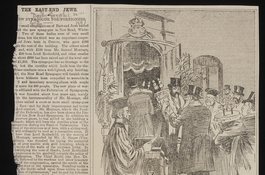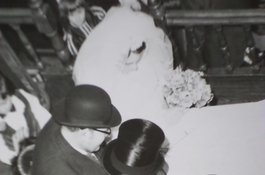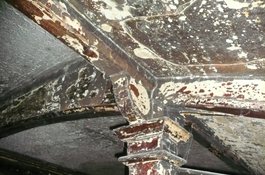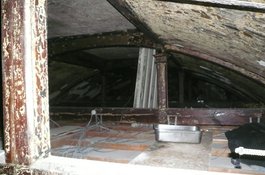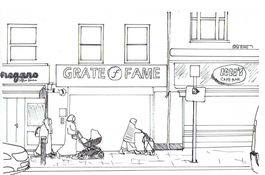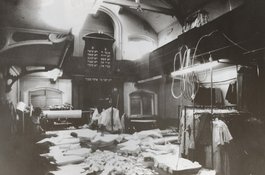115 New Road (including the former New Road Synagogue).
Contributed by Survey of London on May 9, 2018
A warehouse on this site and that of No. 113 by 1817 was replaced by plain
three-storey shophouses, probably put up in 1851 for Duler and Giles of Leman
Street, and possibly extending to Nos 117–119. Around 1950 Nisar Ali opened a
restaurant at No. 113 that came to be called the Great Tajmahal, then the
Jhorna Tandoori Indian Restaurant around 1980. In the mid 1980s No. 113 was
rebuilt under a long hipped roof and No. 115 was refronted.
From the back of 115 New Road there is access to a building that was the New
Road Synagogue. Built in 1891–2 to the rear of a large plot of vacant ground
(117–121 New Road and back buildings had been cleared in the 1880s), it
extended north–south to lie behind Nos 113–119. Its origins were with two
Fieldgate Street hevros (prayer circles), mostly people of Polish origin
whose premises had been condemned. They combined through the Federation of
Synagogues, which had been founded in 1887 by Samuel Montagu, a banker and the
Liberal MP for Whitechapel, to help consolidate small minyanim (prayer
quora) into larger congregations. Plans were prepared by Lewis Solomon, the
Federation’s architect, in what was an early opportunity to provide a ‘model’
purpose-built East End synagogue. A 99-year lease was immediately mortgaged to
the Federation through senior congregants: Jacob Singer, a fur merchant of 5
Greenfield Street; Wolf Weber, a Mile End shoemaker; and David Silverberg, a
Dalston grocer. The builder was William Reason, of St John Street,
Clerkenwell. Of the building cost of £1,350 about £400 came from the hevros,
the rest was contributed by the Federation, in reality, most likely by Montagu
himself. In a notable rapprochement in what was a prickly relationship between
the Federation and the more established Anglo-Jewish United Synagogue, the
United’s President, Lord Rothschild, laid a foundation or memorial stone at
the opening of the New Road Synagogue – ‘God Save the Queen’ (it was
Victoria’s birthday) was sung in Hebrew.
Despite its tucked-away situation, New Road was one of Whitechapel’s more
ambitious and architecturally distinctive synagogues, though suitably
unpretentious. The interior was lantern-lit and ventilated from above through
an ornamentally finished queen-post roof that remains intact. There was space
to accommodate more than 300 worshippers (500 was claimed) on the ground floor
and in the gallery on three sides. Surprisingly, in a new-build synagogue,
albeit on a restricted site, the Ark was on the north wall. In 1955 New Road
Synagogue was renovated out of monies that came to the Federation as a result
of war-damage and compulsory-purchase orders. However, the congregation
dwindled and the synagogue closed in 1974, amalgamating with the East London
Central Synagogue, Nelson Street. The foundation stone was removed to
Whitechapel Library and thence to London Metropolitan Archives. Sold, the
building became a garment workshop for a Bangladeshi manufacturer. The roof-
space aside, the interior, including galleries, has been reconstructed.
Signwriting at New Road Synagogue
Contributed by Alicia on Oct. 31, 2018
My parents, who had an ironmongery shop at 183 Whitechapel Road from 1930 to
1970 originally lived a couple of doors away from the New Road Synagogue.
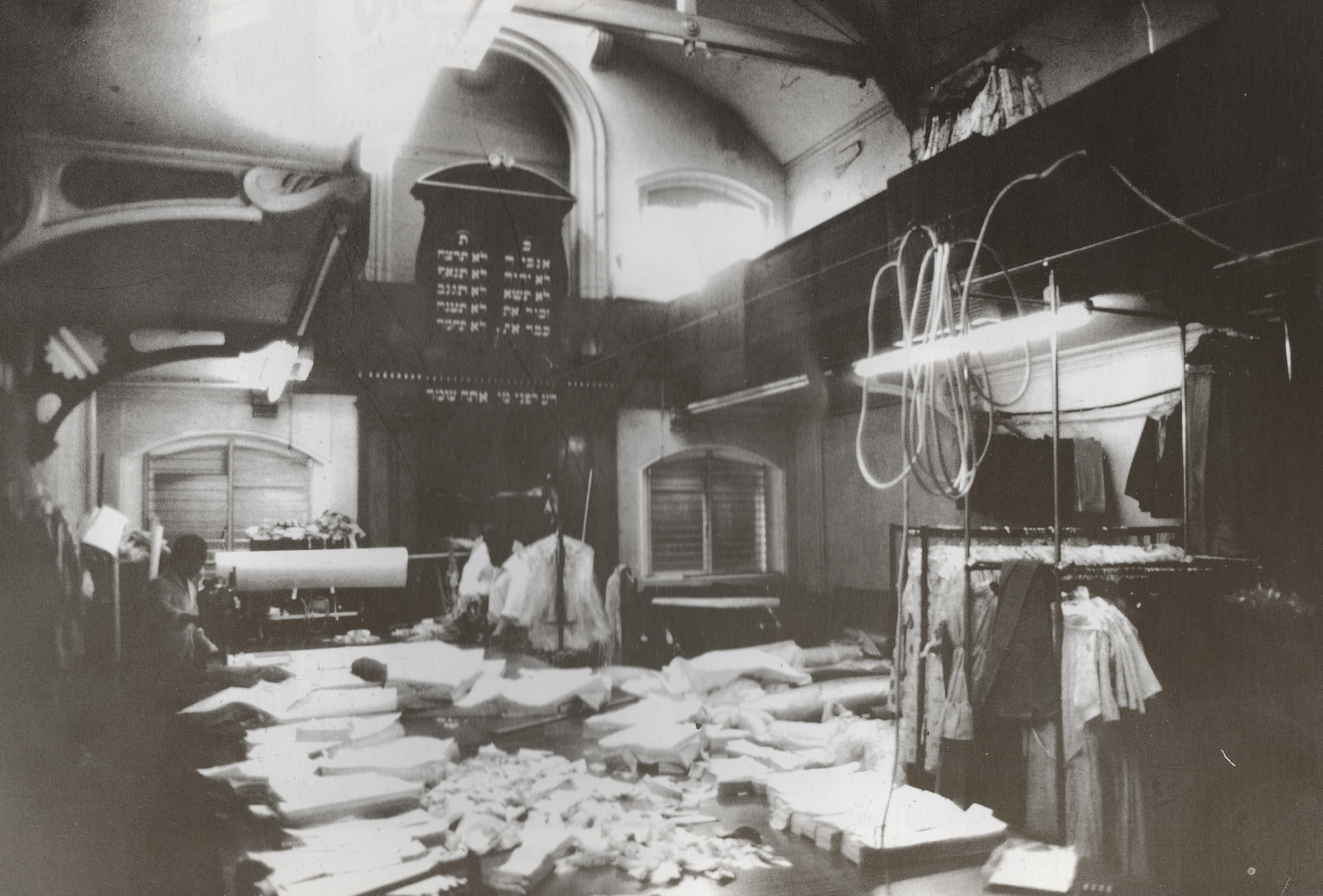


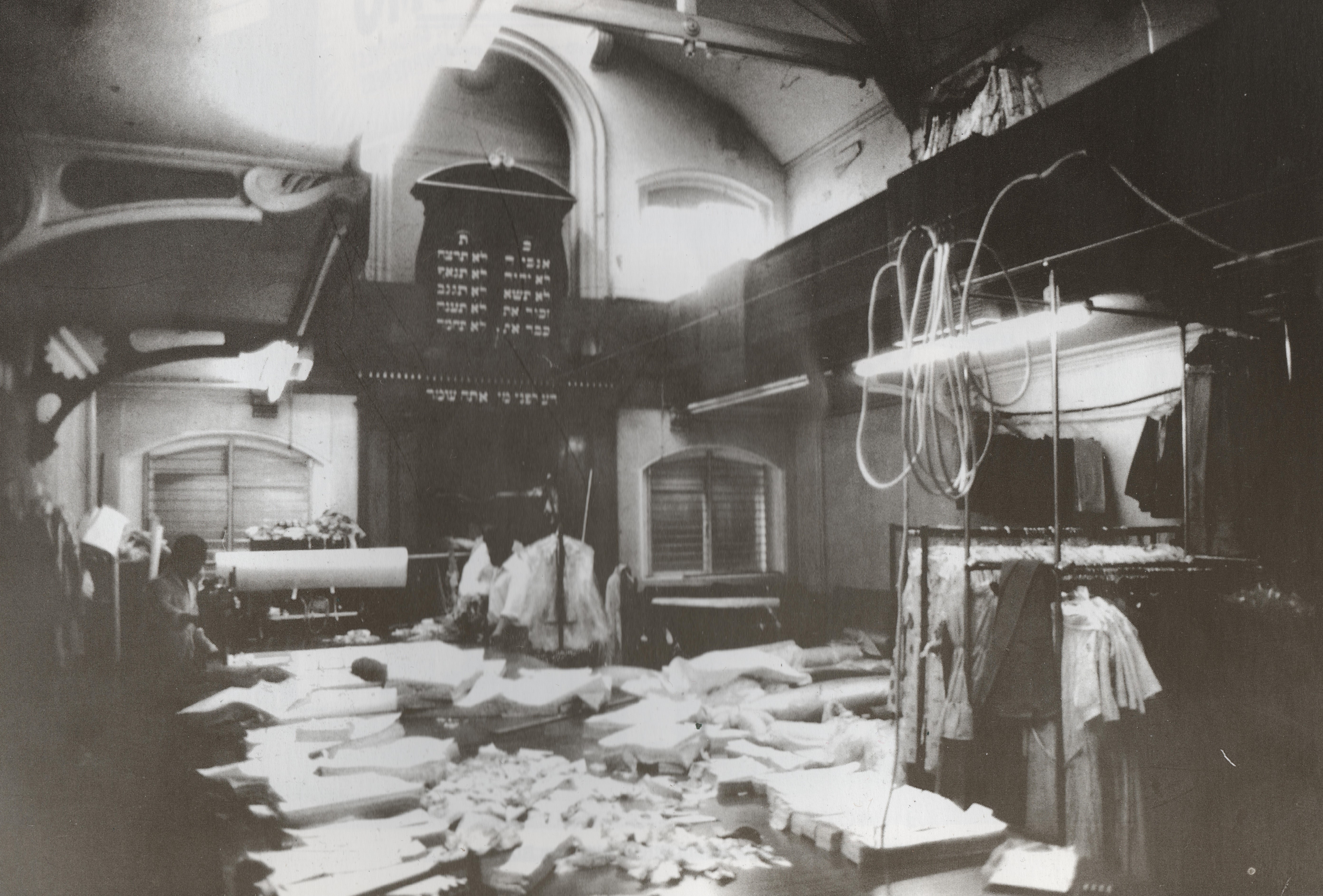
My grandfather actually was a signwriter who created all the signs for the
synagogue, seen
here. He was a
warden of the synagogue. The Hebrew lettering in this picture was written in
gold by my grandfather, Marks Manowitz.
New Road Synagogue
Contributed by Shahed Saleem on March 21, 2017
115 New Road is the site of the former New Road Synagogue, which closed in
1974 when it was amalgamated with the East London Central Synagogue, still in
operation on Nelson Street (Jewish Communities & Records UK). It was
formed through the amalgamation of two Hevros (prayer circles) that were based
on neighbouring Fieldgate Street, and was consecrated on the 24th May 1892.
The Synagogue was built at a cost of £1350, of which £400 was raised by the
Hevros themselves and the remainder contributed by the Federation of Jewish
Synagogues, New Road probably being their earliest 'model' synagogue. (Kadish,
S 2011 p.153).
Historic maps from the 1890s onwards show a building built in what was likely
the rear yard of No.115, and stretching across the back of 113, 115 and 117.
This rear yard infill is marked on various maps as the New Road Synagogue,
which suggests that 115 was probably retained as a C19th terrace, and provided
access through to the newly built synagogue behind. Sharman Kadish notes that
the Jewish Chronicle described it as an unpretending structure.
She also describes how photographs of the interior of the synagogue dating
from the 1970s (probably mid-late) show clothing stacked in the prayer hall,
as the 'premises were then being used as a garment warehouse by one of the
Bangladeshi manufacturers who followed the Jews into the East End'.
LB Tower Hamlets planning records show that a planning application was
approved in January 1977 for the change of use of the site to a garment
manufacturing facility with office, showroom and storage. This simple planning
record encapsulates the demographic change taking place in Whitechapel in the
1970s as the Jewish population was dispersing and the Bangladeshi moving in.
Whilst Kadish remarks that no trace of the original building remains, and from
looking at the street frontage No.115 does present a relatively recent facade
(although no corresponding planning record is apparent). There are, however,
no planning applications for the demolition and rebuilding of the former
synagogue, so it is possible that the structure of the New Road Synagogue is
still standing in some form across the back of Nos. 113-119, and which has
been through various internal alterations and refurbishments since the mid-
1970s.
A trip around the back of 115 beckons...




